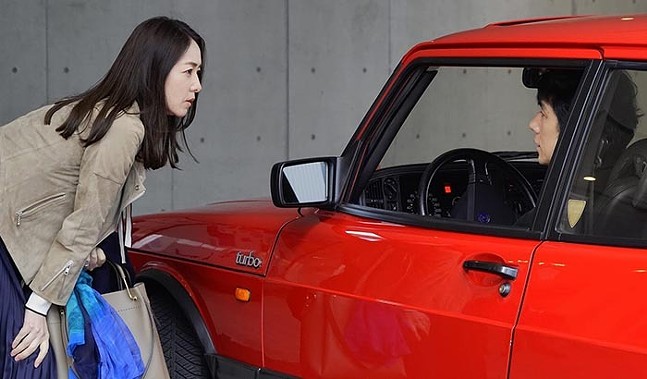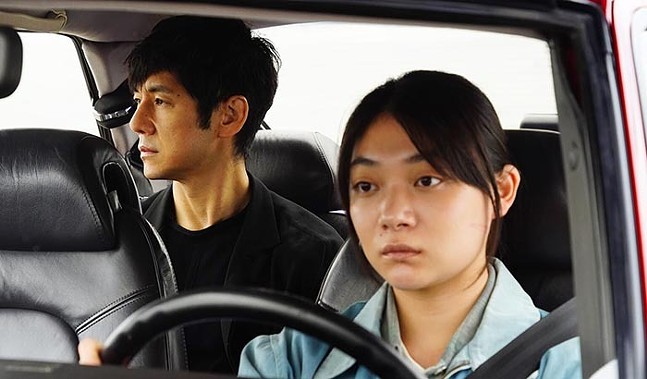“You must keep working.” So Yusufe Kafuku (Hidetoshi Nishijima) is told, and tells himself, in Ryusuke Hamaguchi’s brilliant new, award-winning film Drive My Car. It’s one of the most common and destructive things we can convince ourselves of in the wake of grief, the notion that if we just keep going about our day, the feeling will simply fade into the banality.
With his latest work — opening on Thu., Jan. 20 at the Harris Theater — Hamaguchi aims to crumble the walls between grief and work. When Kafuku’s loving but philandering screenwriter wife Oto (Reina Kirishima) dies suddenly of a brain hemorrhage, he can’t process the loss, even two years on, where the bulk of the film takes place. So naturally, as an acclaimed actor, he feels he needs to channel his despair into art, in the form of Chekhov’s play Uncle Vanja. A majority of the film’s action occurs in his beautiful red Saab (immediately an iconic movie car), as his assigned driver Watari (Toko Miura) shuttles him back and forth to rehearsals.
It should be noted right up front, the word “action” is used loosely. This is an extremely slow film, three hours on the nose and content to take its time in every minute of it. I don’t say this as a criticism, simply as a warning for those who don’t want their movies occupying more than 90 minutes of their life. A completely understandable position, but if you let Drive My Car burrow in, it quietly rocks you with every passing minute.
This isn’t a film that uses its length as a self-serving way of showing how important it is. Instead, much like another slow-burn stunner The Power of the Dog, also released in 2021, Hamaguchi uses every frame of his work to deepen the characterization of Kafuku and those around him, stripping him back slowly, then occasionally covering him right back up.
Drive My Car is obsessed with language, how the same phrase can be morphed and changed to fit any particular meaning, and how we use our words to conceal our feelings, not expose them.
An almost comical part of the runtime is devoted to people rehearsing lines. Kafuku uses the Saab to obsessively go over his dialogue; he makes his actors do table reads until they’re absolutely sick of him; Oto even literally comes up with her award-winning screenplays in the middle of sex, reaching orgasm as she finds the endpoint to the story.
Some of the parallels between the stories these characters tell and the real-life they lead are obvious, but the underlying metaphor is more complex. They’re all assuming roles that are close to enough to reality to get out what they want to say, but detached enough that they can slip right back into their guarded shells at a moment’s notice.
This is what makes Hamguchi’s use of the Saab such a powerful force. He shoots it lovingly, from every angle. It acts as the centerpiece because it’s the one place these characters let their guard down. Watari adds to this, a stoic force that’s just as comfortable shutting up and driving as she is telling someone the one thing they were trying to keep repressed.
This isn’t one of those masturbatory “movie about movies” type films that are purely designed to attract checked boxes from self-important Oscar voters. Drive My Car feels truly authentic, in only a way a film about everyone lying to themselves can be. Hamaguchi sets so much of the film in the motion of a car, with a pair of people trying to run away from the things they know they have to face. In the end, the car is parked and you have to deal with it anyway.
Drive My Car. Showtimes vary. Thu., Jan. 20-Thu., Feb. 17. Harris Theater. 809 Liberty Ave., Downtown. $11. trustarts.org



